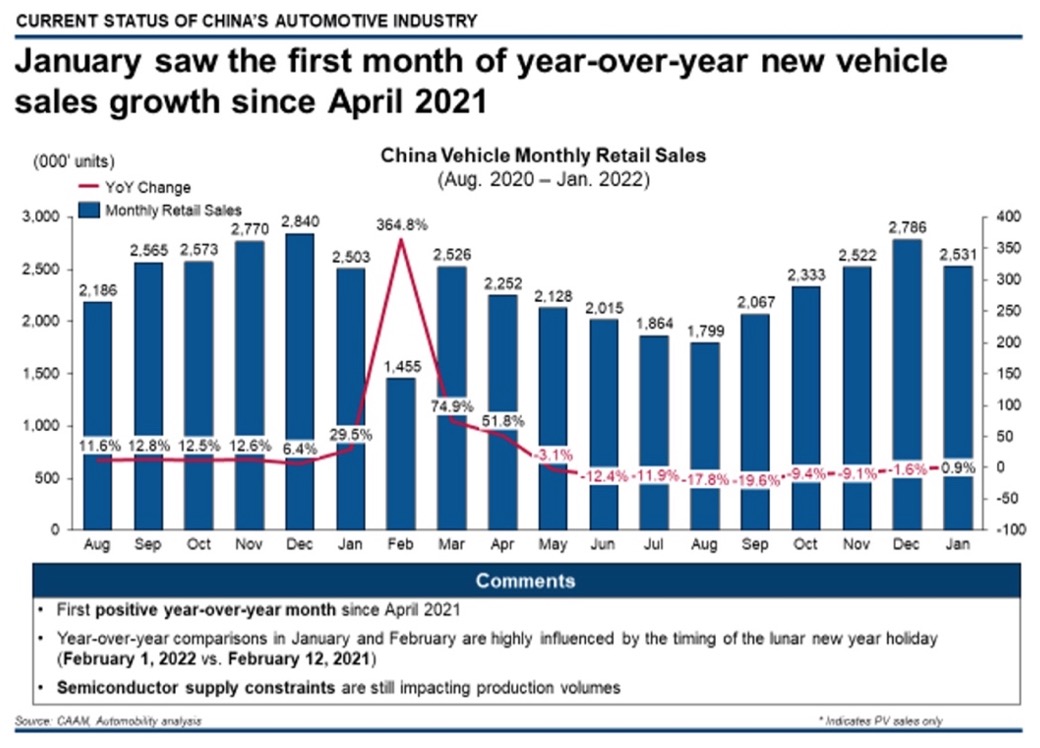China's Automotive Market: Challenges And Opportunities For Brands Like BMW And Porsche

Table of Contents
Challenges Facing Luxury Car Brands in China
The Chinese automotive market, while incredibly promising, presents significant challenges for luxury car brands. Understanding these obstacles is crucial for developing effective strategies.
Intense Competition
The competition in the China automotive market is fierce, a battleground for both established domestic brands and international players. Chinese automotive manufacturers are rapidly gaining market share, leveraging their understanding of local consumer preferences and adopting innovative strategies. This intense competition manifests in several ways:
- Growing popularity of electric vehicles (EVs) from Chinese manufacturers: Companies like BYD and NIO are rapidly innovating and producing high-quality EVs, directly challenging the dominance of established luxury brands.
- Price wars and aggressive marketing strategies: Domestic brands often employ aggressive pricing and marketing tactics to gain market share, putting pressure on established players to match or exceed their offers.
- Sophisticated consumer preferences: Chinese consumers are increasingly discerning, demanding high-quality vehicles with advanced features and personalized experiences. Meeting these sophisticated expectations requires significant investment and adaptation.
Regulatory Hurdles and Governmental Policies
Navigating the Chinese regulatory landscape is a significant undertaking. Government regulations concerning emissions, safety standards, and import tariffs significantly impact the operational costs and profitability of luxury car brands.
- Stricter emission standards and incentives for EVs: The Chinese government is actively promoting the adoption of electric vehicles through stricter emission standards and substantial subsidies, forcing traditional automakers to adapt quickly to EV production.
- Import duties and taxes: High import duties and taxes increase the cost of importing vehicles into China, affecting the pricing and competitiveness of foreign brands.
- Localization requirements for foreign brands: Many foreign brands are required to establish local production facilities and partnerships to operate within China, requiring significant investment and resource allocation.
Supply Chain Disruptions and Economic Volatility
Global supply chain disruptions and economic uncertainties significantly impact the Chinese automotive market. These factors affect production timelines, pricing strategies, and ultimately, consumer confidence.
- Impact of the global chip shortage: The global semiconductor chip shortage has significantly impacted vehicle production globally, including China, leading to delays and production constraints.
- Fluctuations in the Chinese economy: Economic fluctuations within China directly affect consumer spending and demand for luxury vehicles.
- Rising raw material costs: Increases in the cost of raw materials, such as steel and aluminum, further impact production costs and vehicle pricing.
Opportunities for Growth in the Chinese Automotive Market
Despite the challenges, the Chinese automotive market presents substantial opportunities for growth for luxury car brands willing to adapt and innovate.
Growing Affluent Consumer Base
China's expanding middle class represents a massive potential consumer base with growing purchasing power. This burgeoning affluence fuels demand for luxury goods and premium vehicles.
- Rising disposable incomes: Increased disposable income among Chinese consumers translates to a greater willingness to spend on luxury items, including high-end vehicles.
- Increased consumer spending on luxury items: The Chinese consumer market shows a growing preference for luxury brands and experiences, positioning luxury car brands for significant growth.
- Growing preference for prestige brands: Luxury car brands continue to hold significant prestige and desirability within the Chinese market, attracting affluent consumers seeking status and quality.
The Rise of Electric Vehicles (EVs)
The electric vehicle (EV) market in China is booming, presenting significant opportunities for luxury car brands to establish themselves as leaders in this rapidly growing segment.
- Significant government subsidies for EV purchases: The Chinese government provides substantial subsidies for EV purchases, making them more accessible and attractive to consumers.
- Extensive charging infrastructure development: China is actively investing in the development of charging infrastructure, addressing concerns about range anxiety and facilitating EV adoption.
- Growing consumer interest in electric luxury vehicles: Chinese consumers show a growing preference for electric luxury vehicles, creating an opportunity for brands to offer high-end, sustainable options.
Digitalization and Connected Car Technologies
Digitalization and connected car technologies are transforming the Chinese automotive market, providing opportunities for luxury brands to enhance the customer experience and strengthen their competitive position.
- Growing adoption of online car buying platforms: The increasing adoption of online car buying platforms creates new avenues for reaching and engaging with potential customers.
- Demand for advanced driver-assistance systems (ADAS): Chinese consumers are increasingly interested in advanced driver-assistance systems, providing opportunities for luxury brands to showcase innovative technologies.
- Integration of mobile connectivity and infotainment systems: Seamless integration of mobile connectivity and sophisticated infotainment systems is crucial for attracting tech-savvy Chinese consumers.
Conclusion: Capitalizing on China's Automotive Market Potential
The Chinese automotive market presents a complex landscape of challenges and opportunities for luxury brands like BMW and Porsche. While intense competition, regulatory hurdles, and economic volatility pose significant obstacles, the burgeoning affluent consumer base, the rapid growth of the EV market, and the increasing importance of digital technologies create significant potential for growth. To succeed in this dynamic market, brands must prioritize strategic adaptation, innovative product development, and a deep understanding of the unique needs and preferences of Chinese consumers. Understanding the nuances of China's automotive market is key to developing effective strategies and capitalizing on its immense potential. Don't miss out – learn more about navigating this complex but rewarding market and begin formulating your strategy today.

Featured Posts
-
 Uk Diy Retailers The Best And Worst Revealed
Apr 23, 2025
Uk Diy Retailers The Best And Worst Revealed
Apr 23, 2025 -
 Morning Retail Et Nutriscore Decryptage Des Pratiques Industrielles
Apr 23, 2025
Morning Retail Et Nutriscore Decryptage Des Pratiques Industrielles
Apr 23, 2025 -
 Turning Trash To Treasure An Ai Powered Poop Podcast From Repetitive Documents
Apr 23, 2025
Turning Trash To Treasure An Ai Powered Poop Podcast From Repetitive Documents
Apr 23, 2025 -
 Ramazan Imsakiyesi 2024 Istanbul Ankara Izmir Icin Guenluek Iftar Ve Sahur Zamanlari
Apr 23, 2025
Ramazan Imsakiyesi 2024 Istanbul Ankara Izmir Icin Guenluek Iftar Ve Sahur Zamanlari
Apr 23, 2025 -
 Brewers 2024 Two Departures To Mourn Two To Forget
Apr 23, 2025
Brewers 2024 Two Departures To Mourn Two To Forget
Apr 23, 2025
